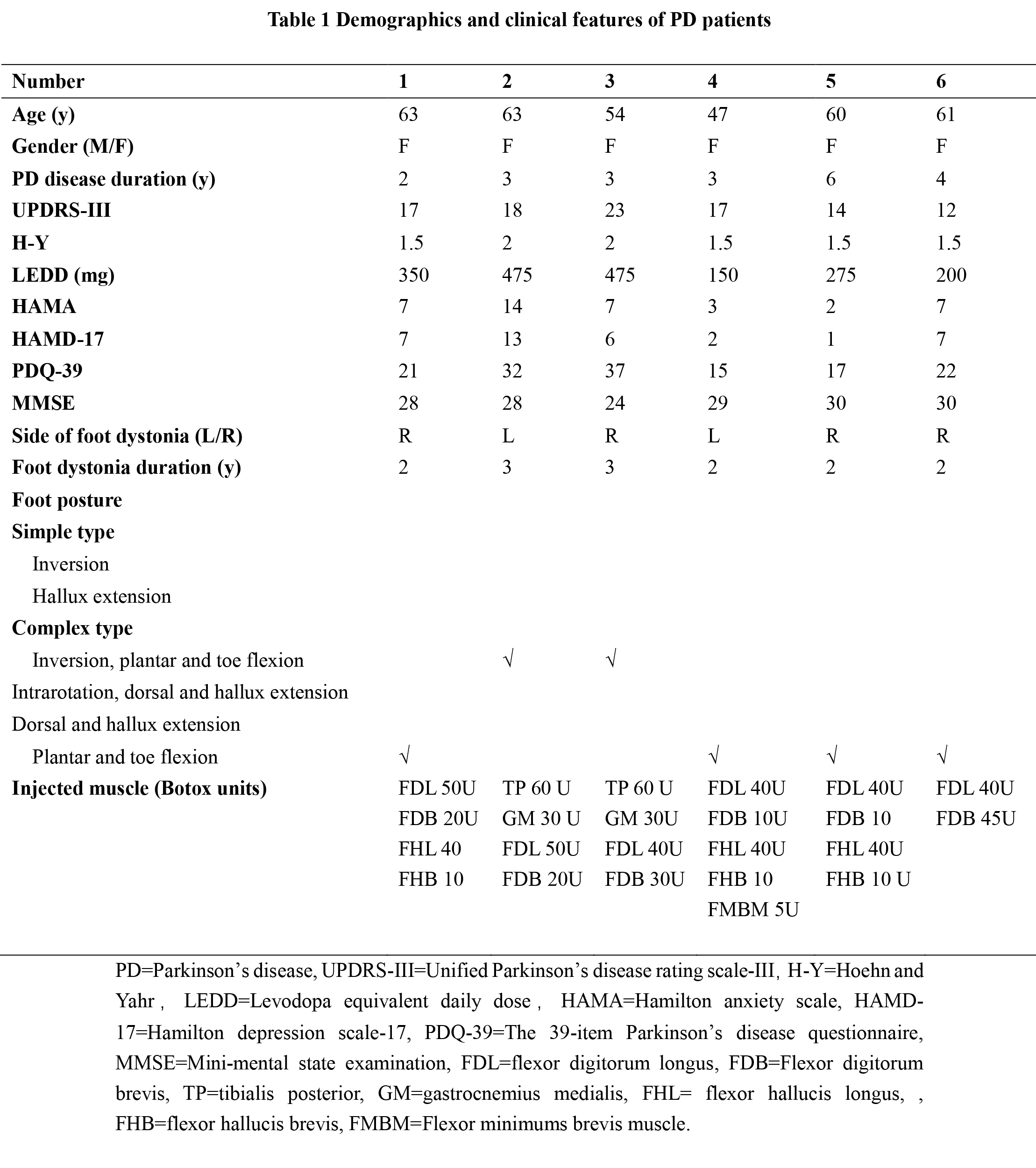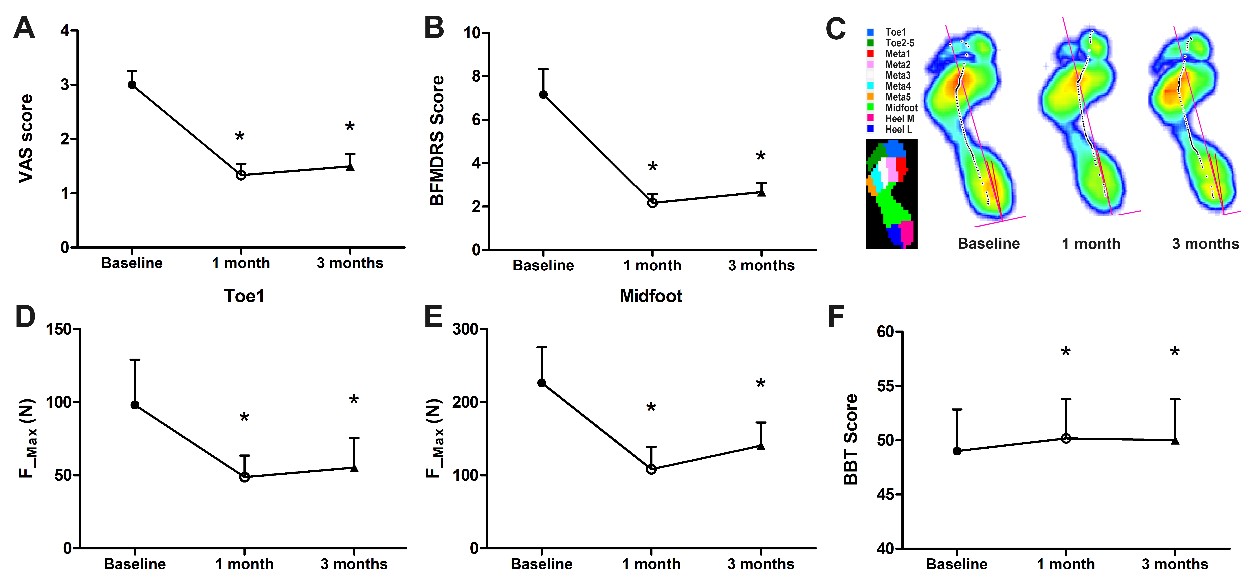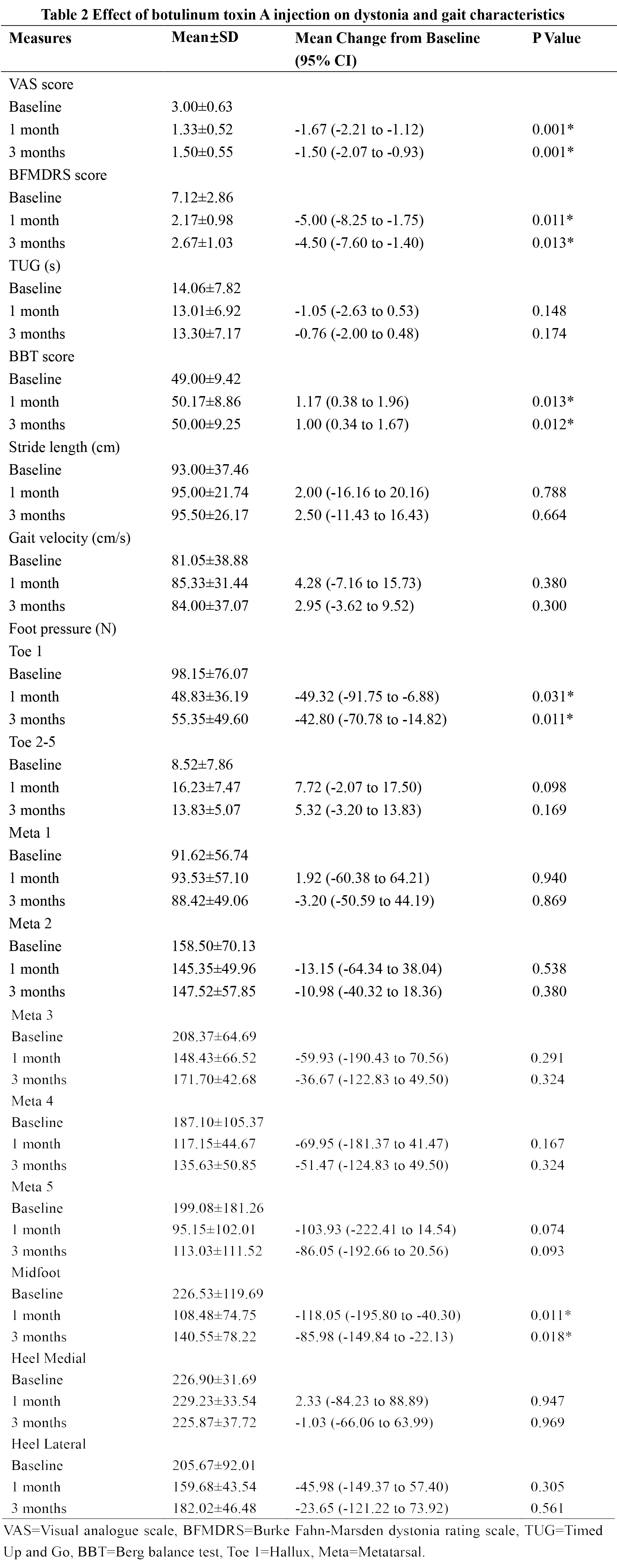Objective:
To investigate the effectiveness of botulinum toxin (BoNT) in reducing the severity of dystonia and improving gait and balance in Parkinson’s disease (PD) patients with foot dystonia (FD).
Background:
Previous studies suggest that pain and severity of the lower limb dystonia was consistently improved with BoNT treatment [1]. However, few evidences were found in functional improvement, including gait and balance, with the treatment of FD in PD [2-3].
Method: Six patients with idiopathic PD experiencing foot dystonia were enrolled in our study from 2018 September to 2019 January [table 1]. All of them underwent botulinum toxin injection and were followed-up for 3 months. Clinical features, Burke Fahn-Marsden dystonia rating scale (BFMDRS), Visual analogue scale (VAS) were performed at baseline, 1 month and 3 months follow-up. Moreover, functional outcomes of gait and balance, such as Timed Up and Go (TUG) test, Berg balance test (BBT) scales were measured. In the meanwhile, a three-dimensional gait analysis system Vicon and Footscan® platform system was further used to record the stride length, gait velocity and the dynamic foot pressure.
Results: Three months after botulinum toxin injection, significant improvements were noted in the severity of dystonia (p=0.011) and pain (p=0.001). Balance ability evaluated by BBT score was also significantly improved by injection (p=0.012) [table 2]. Furthermore, we found that plantar center of pressure (COP) trajectory was medially shifted during walking after the injection, while significant reduction in foot pressures at Toe 1 (p=0.031) and Midfoot (p=0.011) of the dystonia side were also observed [figure 1].
Conclusion:
This case series and pilot study elucidate that botulinum toxin injection not only reduce the dystonia severity and pain related to FD, but also improve the plantar pressure distribution and balance ability in PD patients.
References: 1. Rieu I, Degos B, Castelnovo G, et al. Incobotulinum toxin A in Parkinson’s disease with foot dystonia: A double blind randomized trial. Parkinsonism Relat Disord 2018;46:9-15. 2. Datta Gupta A, Tucker G, Koblar S, Visvanathan R, Cameron ID. Spatiotemporal Gait Analysis and Lower Limb Functioning in Foot Dystonia Treated with Botulinum Toxin. Toxins (Basel) 2018;10. 3. Gupta AD, Visvanathan R. Botulinum toxin for foot dystonia in patients with Parkinson’s disease having deep brain stimulation: A case series and a pilot study. J Rehabil Med 2016;48:559-562.
To cite this abstract in AMA style:
P. Huang, YY. Li, P. Huang, Q. Xiao, Y. Wang, S. Chen, S.D Chen, J. Liu, Y.W Wu. Effects of onabotulinum toxin A on balance and gait in Parkinson’s disease with foot dystonia: A case series study [abstract]. Mov Disord. 2020; 35 (suppl 1). https://www.mdsabstracts.org/abstract/effects-of-onabotulinum-toxin-a-on-balance-and-gait-in-parkinsons-disease-with-foot-dystonia-a-case-series-study/. Accessed December 14, 2025.« Back to MDS Virtual Congress 2020
MDS Abstracts - https://www.mdsabstracts.org/abstract/effects-of-onabotulinum-toxin-a-on-balance-and-gait-in-parkinsons-disease-with-foot-dystonia-a-case-series-study/



